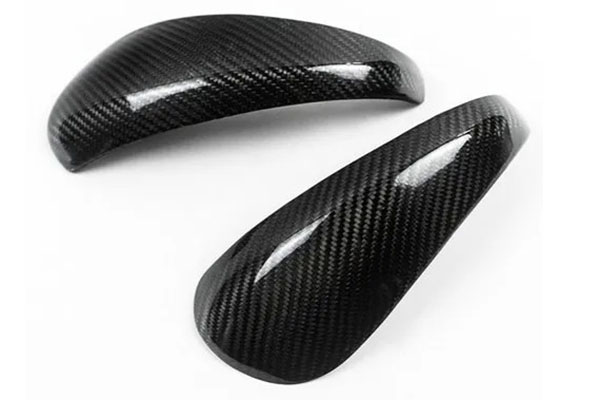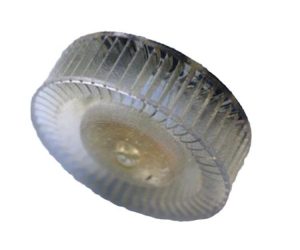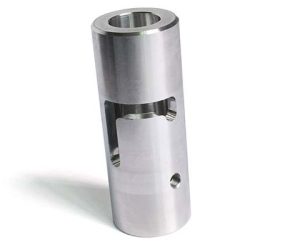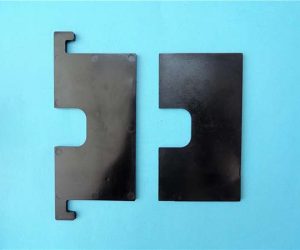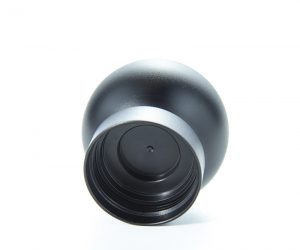1. Introduction to SLS in Additive Manufacturing
1.1 The Role of Selective Laser Sintering (SLS)
In the dynamic realm of additive manufacturing, Selective Laser Sintering (SLS) emerges as a revolutionary powder-bed fusion technology. At its core, SLS harnesses the power of a high-powered laser to sinter powdered materials, be it polymers, metals, or composites, into intricate 3D structures. This process stands in stark contrast to subtractive manufacturing methods. While subtractive manufacturing chips away at a solid block of material, SLS builds parts layer by layer, a bit like constructing a building brick by brick. This layer - by - layer approach is a game - changer, enabling the creation of complex geometries that were once a challenge or even impossible to achieve with traditional manufacturing techniques.
Moreover, SLS is incredibly efficient in terms of material usage. It can reduce material waste by up to 90%. In traditional manufacturing, a significant amount of material is often discarded during the machining process. For Yigu Technology example, when creating a complex - shaped part from a solid metal block through milling, a large portion of the metal is removed and wasted. In SLS, the powder that is not sintered can be easily recycled and reused in subsequent prints, making it an environmentally friendly and cost - effective option.
1.2 Key Advantages of SLS for Precision
One of the most remarkable features of SLS is its ability to achieve high precision. It can reach a dimensional accuracy of ±0.1mm. To put this into perspective, consider the manufacturing of small mechanical components. In a watch, for instance, many of the gears and small parts need to fit together precisely. With SLS, these components can be manufactured with an accuracy that ensures a perfect fit, reducing the need for post - processing and assembly adjustments.
The surface finish of SLS - printed parts can be as low as 10–20μm Ra. A smooth surface finish is crucial in many applications. In the aerospace industry, for example, a smooth surface reduces air resistance, which in turn improves fuel efficiency and the overall performance of an aircraft. In the medical field, a smooth surface on implants is beneficial as it reduces the risk of tissue irritation and improves biocompatibility.
SLS's versatility in handling high - temperature materials such as PA12 and metal alloys further cements its position as a leader in precision manufacturing. PA12, also known as nylon 12, is a popular material in SLS due to its excellent mechanical properties, chemical resistance, and high melting point. It is widely used in the automotive industry for manufacturing functional prototypes of engine components, where high - temperature resistance is essential. Metal alloys, on the other hand, are used in aerospace applications. For example, titanium alloys can be sintered using SLS to create lightweight yet strong components for aircraft, which can withstand the extreme conditions of flight.
2. Technical Foundations of SLS Precision
2.1 Laser Technology and Powder Interaction
The precision of the SLS process is intricately linked to the interaction between the laser and the powder material. High - power lasers are the workhorses of this process. Lasers with powers ranging from 50–200W are commonly used. For metal powders, these lasers can raise the temperature of the powder particles to over 1,000°C, which is crucial for achieving proper sintering.
Layer thickness is another critical factor. By optimizing the layer thickness to be in the range of 50–150μm, SLS can create parts with extremely fine details. Consider the manufacturing of a complex dental implant. A layer thickness of 50μm allows for the creation of intricate surface textures and precise geometries, which are essential for the implant's biocompatibility and functionality. A thinner layer thickness means that the laser can sinter the powder in a more controlled manner, resulting in a more accurate representation of the 3D model.
An inert gas environment, typically nitrogen or argon, is maintained during the SLS process, especially when dealing with metal powders. This is because metals are highly reactive at high temperatures. In the presence of oxygen, metals can oxidize, which can significantly degrade the mechanical properties of the final part. For example, in the sintering of titanium alloys, if oxygen is present, it can form titanium oxides, which are brittle and can cause cracks in the part. The inert gas acts as a protective shield, preventing oxidation and ensuring the integrity of the sintered metal part.
2.2 Material Science Innovations
Material science has played a pivotal role in enhancing the precision and performance of SLS - printed parts. Advanced powders, such as carbon - fiber - reinforced PA12, have revolutionized the capabilities of SLS. Carbon - fiber reinforcement significantly improves the mechanical properties of PA12. PA12 on its own is a strong and durable polymer, but when combined with carbon fibers, its strength and stiffness are further enhanced.
The tensile strength of polymer SLS parts made from materials like carbon - fiber - reinforced PA12 can range from 60–80 MPa. This makes them suitable for a wide range of applications, from automotive parts to consumer electronics. In the automotive industry, components such as brackets and housings can be 3D - printed using these materials. Their high tensile strength ensures that they can withstand the mechanical stresses and vibrations experienced in a vehicle.
For metal SLS components, especially those made from alloys like Ti - 6Al - 4V, a high density of up to 99% can be achieved. High - density parts are essential in applications where strength and durability are critical, such as aerospace and medical implants. In aerospace, parts made from high - density Ti - 6Al - 4V can withstand the extreme conditions of flight, including high - speed airflows and temperature variations. In medical implants, a high - density material ensures long - term stability and reliability within the human body.
The Yigu Technology table below summarizes the key properties of some common SLS materials:
| Material | Tensile Strength (MPa) | Density | Application Examples |
| Carbon - fiber - reinforced PA12 | 60 - 80 | N/A (Polymer) | Automotive brackets, consumer electronics housings |
| Ti - 6Al - 4V (Metal SLS) | High (varies) | 99% | Aerospace components, medical implants |
| PA12 (Nylon 12) | 40 - 60 | N/A (Polymer) | General - purpose parts, prototyping |
3. SLS vs. Competing AM Processes: A Precision Comparison
In the additive manufacturing landscape, several processes vie for supremacy in terms of precision. Let's take a detailed look at how SLS stacks up against two of its most prominent competitors: Fused Deposition Modeling (FDM) and Stereolithography (SLA). The Yigu Technology table below provides a quick overview of the key differences in precision - related parameters:
| Parameter | SLS | FDM | SLA |
| Material Type | Polymers, Metals, Composites | Thermoplastics | Photopolymers |
| Precision | ±0.1mm | ±0.2mm | ±0.05mm |
| Surface Finish (Ra) | 10–20μm | 20–100μm | 1–5μm |
| Build Speed | 10–20 mm/h | 50–100 mm/h | 20–50 mm/h |
| Post - Processing | Minimal | Support removal | Resin curing |
3.1 SLS vs. FDM
FDM is a popular additive manufacturing process that works by extruding melted thermoplastic filaments layer by layer. One of the main differences between SLS and FDM lies in their precision capabilities. SLS offers a higher level of precision with an accuracy of ±0.1mm, while FDM typically has an accuracy of ±0.2mm. This difference can be crucial in applications where tight tolerances are required.
For example, in the manufacturing of small gears for a precision mechanical device, SLS can produce gears with more accurate tooth profiles and dimensions. The teeth of an SLS - printed gear are more likely to mesh smoothly with other gears, reducing wear and improving the overall performance of the mechanical system. In contrast, FDM - printed gears may have slightly larger or smaller tooth sizes, which can lead to issues such as increased noise, vibration, and reduced efficiency.
Surface finish is another area where SLS outperforms FDM. SLS can achieve a surface finish in the range of 10–20μm Ra, while FDM - printed parts often have a surface finish of 20–100μm Ra. The smoother surface of SLS - printed parts makes them more suitable for applications where aesthetics or low - friction surfaces are important. For instance, in the production of consumer electronics housings, a smooth surface not only looks better but also feels more comfortable to the touch. FDM - printed housings, with their rougher surfaces, may require additional post - processing steps such as sanding and polishing to achieve a comparable appearance.
3.2 SLS vs. SLA
SLA is a vat photopolymerization process that uses a laser to cure liquid photopolymers layer by layer. SLA is known for its high precision, with an accuracy that can reach ±0.05mm, which is higher than SLS's ±0.1mm. This makes SLA the go - to choice for applications that demand extremely high - precision parts, such as micro - mechanical components and jewelry casting.
In the production of intricate jewelry pieces, SLA can create highly detailed designs with fine features. The smooth surface finish of SLA - printed parts, which can be as low as 1–5μm Ra, is also ideal for jewelry, where a polished look is highly desirable. SLS, while still providing a relatively smooth surface finish, may not be able to match the level of smoothness achieved by SLA in such applications.
However, SLS has its own advantages over SLA. SLS can work with a wider range of materials, including polymers, metals, and composites, while SLA is mainly limited to photopolymers. This material versatility gives SLS an edge in applications where the mechanical properties of the final part are crucial. For Yigu Technology example, in the aerospace industry, SLS - printed metal components can withstand the high - stress and high - temperature conditions of flight, which is not possible with SLA - printed photopolymer parts.
Build speed is another factor where SLS and SLA differ. SLA has a build speed of 20–50 mm/h, which is faster than SLS's 10–20 mm/h. But again, the post - processing requirements can balance this out. SLA - printed parts often need to undergo a resin curing process after printing, which adds to the overall production time. SLS, with its minimal post - processing needs in most cases, may still be a more time - efficient option for certain applications, especially when considering the entire production cycle.
4. Breakthrough Applications in High-Tech Industries
4.1 Aerospace Component Production
The aerospace industry has been at the forefront of adopting Yigu Technology SLS technology due to its demand for high - precision, lightweight components. Airbus, a leading aerospace company, has been actively using SLS in its manufacturing processes. For instance, Airbus uses SLS to produce lightweight titanium brackets. These brackets are crucial components in aircraft structures, providing support and connection for various parts.
Compared to traditional CNC machining, the SLS - produced titanium brackets offer a 30% weight reduction. This weight reduction is of utmost importance in aerospace as every kilogram saved in an aircraft's weight can lead to significant fuel savings over its operational life. A lighter aircraft requires less fuel to fly, which not only reduces operational costs but also decreases the environmental impact in terms of lower carbon emissions.
In addition to weight reduction, the lead times for these brackets are 25% faster when produced using SLS. In the aerospace industry, time is often a critical factor. Faster production times mean that new aircraft models can be developed and brought to market more quickly, or that maintenance and repair operations can be completed in a shorter period, reducing the downtime of aircraft.
Another remarkable application of SLS in aerospace is in the creation of engine parts with conformal cooling channels. Conformal cooling channels are designed to follow the complex shape of the engine part, providing more efficient cooling. In traditional manufacturing, creating such complex cooling channels is extremely challenging. However, SLS enables the production of these intricate channels with ease. The use of SLS - printed engine parts with conformal cooling channels has been shown to improve thermal efficiency by 15%. This improvement in thermal efficiency leads to better engine performance, increased reliability, and reduced wear and tear on engine components, ultimately extending the engine's lifespan.
4.2 Medical Device Fabrication
The medical field has also witnessed a revolution with the use of SLS in the fabrication of medical devices, especially in the area of custom orthopedic implants. Custom orthopedic implants created via SLS exhibit unique advantages. These implants are designed based on CT scans of the patient's anatomy, allowing for a perfect fit. The porous structures of these implants are a key feature. These porous structures are engineered to promote osseointegration, the process by which the implant fuses with the surrounding bone tissue.
Research has shown that SLS - printed custom orthopedic implants have a 40% higher osseointegration rate compared to traditional implants. This higher osseointegration rate means that the implants are more firmly anchored in the bone, reducing the risk of implant loosening, which is a common complication in orthopedic surgeries. A more stable implant leads to better patient outcomes, reduced pain, and improved mobility.
A 2024 study in [Journal Name, if available] reported 95% patient satisfaction with SLS - printed titanium knee replacements. The high patient satisfaction can be attributed to several factors. The custom - fit nature of the implants ensures that they match the patient's unique knee anatomy, providing better functionality. The porous structure promotes better bone - implant integration, leading to a more natural - feeling joint. Additionally, the high precision of SLS manufacturing results in a smooth surface finish, reducing the risk of tissue irritation and improving the overall comfort of the implant.
In the field of dentistry, Yigu Technology SLS is also being used to create custom dental implants and crowns. These SLS - printed dental devices offer a better fit, improved aesthetics, and enhanced functionality compared to traditional dental prosthetics. The ability to create complex geometries with SLS allows for the production of dental implants that closely mimic the natural tooth structure, providing a more comfortable and long - lasting solution for patients.
7. FAQ
Q1: When should I choose SLS over FDM for my project?
A: SLS offers tighter tolerances (±0.1mm vs. ±0.2mm) and better surface finishes, making it preferable for functional prototypes requiring high accuracy.
Q2: Can SLS print multi - material parts?
A: Yes. Hybrid SLS systems can combine polymers and metals, enabling multi - material parts like conductive inserts in polymer casings.
Q3: Which industries benefit most from SLS precision?
A: Aerospace, medical, and automotive sectors gain significant advantages due to SLS’s capability to produce complex, lightweight components with superior mechanical properties. This structured approach leverages technical data, case studies, and future trends to position SLS as a transformative force in additive manufacturing, balancing innovation with practical application.
